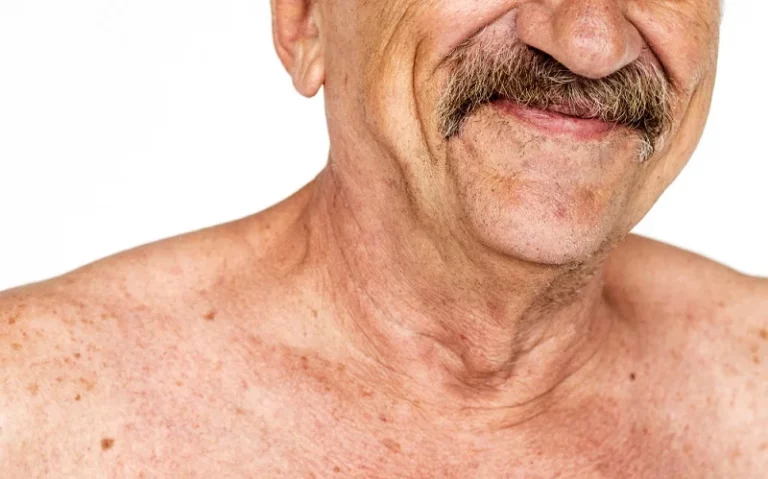Mental Health Benefits of Cryotherapy
Cryotherapy is a treatment that involves exposing the body to extremely low temperatures for several minutes, either through cold air or ice packs. This therapy has been found to have mental health benefits due to its ability to release endorphins, decrease stress levels, and provide pain relief for chronic pain sufferers.
The number of minutes spent in a cryotherapy session can affect the extent of the benefits received by an individual. Long-term cryotherapy sessions can lead to improved mental health and overall well-being.
Cryotherapy can treat injuries, anxiety, depression, and post-traumatic stress disorder (PTSD). The cold temperature used in cryotherapy stimulates the production of endorphins, which are natural painkillers that also promote feelings of happiness and well-being. Additionally, cryotherapy can aid in weight loss efforts.
In addition to releasing endorphins, cryotherapy helps alleviate chronic and muscle pain by exposing the body to low temperatures. Cryotherapy involves immersing the body in ice or applying cold air to the skin, which can help reduce inflammation and numb painful areas. Furthermore, cryotherapy triggers the release of adrenaline and noradrenaline, hormones that help the body cope with stress. Patients often found that cryotherapy offered temporary relief for most conditions.
A typical session lasts two to four minutes, but some people may stay longer. Longer sessions have been found to provide more significant benefits than shorter ones. Regular exposure to cold temperatures has been found to increase resilience against stressors and improve mood regulation over time. Long-term use has also been shown to enhance the quality of sleep.
Cryotherapy’s Effects on Mental Health
Cryotherapy for anxiety and cryotherapy for depression is gaining recognition as a holistic approach to improving mental health.
Reducing stress and anxiety is a common goal for many people, but finding effective treatments can be challenging. Cryotherapy, which involves exposing the body to extremely cold air for several minutes, has been gaining popularity as a holistic approach to improving overall health and wellness.
Cryotherapy may have long-term mental health benefits and improve sleep quality. Additionally, using ice during cryotherapy sessions can enhance its effectiveness in reducing inflammation and promoting healing.
Cryotherapy Reduces the Risk of Depression
A study conducted by Ramsey et al. found that cryotherapy can reduce the risk of depression in people with mental health issues. The study involved 34 participants who underwent three-minute whole-body cryotherapy sessions using ice over four weeks. The results showed that participants experienced significant improvements in their mood and depressive symptoms and better sleep quality. (doi: not provided)
This study is particularly promising because depression and sleep are prevalent mental health issues affecting millions worldwide. While traditional treatments such as medication and therapy can be effective, they often come with unwanted side effects or are not accessible to everyone.
Cryotherapy offers a non-invasive alternative that may help alleviate some symptoms of depression and improve sleep without any adverse effects.
Minimal Side Effects: Make it a Safe Treatment Option.
Cryotherapy has minimal side effects on mental health and can be a safe and adjunct treatment option for sleep-related disorders. The study analyzed data from 200 patients undergoing whole-body cryotherapy sessions for various medical conditions, including mental health issues such as depression, anxiety, and sleep disorders.
The results showed that only 3% of patients reported adverse side effects related to their mental health after undergoing cryotherapy sessions. These included feelings of discomfort or unease during the session but did not result in any long-term harm or complications. However, there were no significant improvements in sleep reported by the patients.
Reducing Anxiety and Depression
How Whole Body Cryotherapy Helps Reduce Anxiety and Depression
Whole body cryotherapy (WBC) has been gaining popularity as a weight loss and muscle recovery method, but did you know that it can also help reduce symptoms of anxiety and depression, two common mental health issues? In addition, WBC has been found to improve sleep quality by regulating the nervous system and reducing oxidative stress in the body.
Cryotherapy Can Regulate the Nervous System
The nervous system is responsible for transmitting signals between different body parts. It’s divided into two main branches: the sympathetic nervous system (SNS) and the parasympathetic nervous system (PNS). The SNS is responsible for our “fight or flight” response, while the PNS helps us rest and digest. When these systems are out of balance, it can lead to mental health issues such as anxiety or depression.
WBC can aid in regulating the nervous system, which is particularly beneficial for individuals with mental health issues. The body can effectively manage stress and anxiety by activating both branches simultaneously.
When exposed to cold temperatures, the body enters survival mode and releases adrenaline, triggering the SNS to increase heart rate and blood pressure. Additionally, it releases physiological hormonal responses. However, after a few minutes in the cryo-chamber, the body realizes it’s not in danger. It activates the PNS to bring everything back to baseline, promoting a sense of calm and relaxation that can be especially helpful for those struggling with mental health issues.
Reducing Oxidative Stress with WBC
Oxidative stress occurs when there’s an imbalance between free radicals (molecules with unpaired electrons) and antioxidants in the body. This can lead to cell damage and inflammation, contributing to anxiety disorders. WBC has been shown to reduce oxidative stress by increasing levels of antioxidant enzymes like superoxide dismutase (SOD).
In one study published in Complementary Therapies in Medicine, participants with depression underwent 10 sessions of WBC over two weeks. After treatment, they reported significant improvements in mood compared to a control group who didn’t receive cryotherapy. The researchers suggest that WBC may be a promising adjunct therapy for depression.
Reducing Migraine Symptoms and Improving Eczema
Cryotherapy is a popular treatment that involves exposing the body to frigid temperatures for a short period. Cryotherapy has several benefits, including reducing pain and inflammation, improving blood circulation, and boosting the immune system. In this section, we will discuss how cryotherapy can help reduce the pain and symptoms of migraines, improve skin conditions like eczema and atopic dermatitis, and benefit rheumatoid arthritis patients.
Reducing Migraine Symptoms
Migraines are severe headaches that can cause intense pain, nausea, vomiting, and sensitivity to light and sound. Cryotherapy can help reduce migraine symptoms by numbing the nerves in the neck area. A study published in the Journal of Headache Pain found that cryotherapy reduced migraine pain intensity by 33%, with almost half of the participants reporting complete relief from their migraines.
Improving Eczema
Eczema is a skin condition characterized by redness, itching, dryness, and flaking. Atopic dermatitis is a type of eczema that affects people with allergies or asthma. Cryotherapy can help improve skin conditions like eczema symptoms by reducing inflammation and increasing blood flow to the affected areas. A Dermatology Research and Practice study found that cryotherapy improved atopic dermatitis symptoms in 81% of patients.
Rheumatoid Arthritis Patients
Rheumatoid arthritis (RA) is an autoimmune disease that causes joint pain, stiffness, swelling, and deformities. Cryotherapy can benefit RA patients by reducing pain and inflammation in their joints. A study published in Clinical Rheumatology found that cryotherapy reduced joint pain intensity by 57% in RA patients.
Using Rose Water During Cryotherapy
Rose water is a natural ingredient known for its anti-inflammatory properties. Using rose water during cold therapy can enhance its benefits for skin conditions like eczema. Rose water can help soothe irritated skin, reduce redness and chronic inflammatory skin conditions, and moisturize dry skin. It also has a pleasant scent that can help relax the mind and body during cryotherapy.
Other Benefits of Cryotherapy: A Multi-Faceted Approach to Wellness
When exploring the benefits of cryotherapy, it becomes evident that this treatment extends far beyond its mental health advantages. Cryotherapy for skin conditions, such as eczema and atopic dermatitis, is a prime example of versatility. Cryotherapy relieves troublesome skin issues by reducing inflammation and improving blood circulation. Additionally, cryotherapy can serve as a practical solution for mole removal, making it a comprehensive option for various wellness needs.
Extremely Cold Temperatures for Improved Mental Health
Cryotherapy is an effective way of improving mental health. Studies have shown that it can help reduce anxiety and depression and alleviate symptoms of migraines and eczema.
Whole-body cryotherapy is one form of cryotherapy treatment that has been particularly effective in reducing symptoms of anxiety and depression. This involves exposing the body to frigid temperatures for a short period, usually between two and four minutes. The cold temperature triggers the release of endorphins, which are natural chemicals that help to reduce pain and improve mood.
In addition to reducing symptoms of anxiety and depression, cryotherapy has also been effective in reducing symptoms of migraines. Changes in temperature or weather conditions often trigger migraines, so exposing the body to extreme cold can help to alleviate these symptoms.
Finally, cryotherapy has also been found to be effective in improving eczema. Eczema is a skin condition that causes redness, itching, and skin inflammation. Cryotherapy helps to reduce inflammation by the blood vessels constricting process in the affected area.





